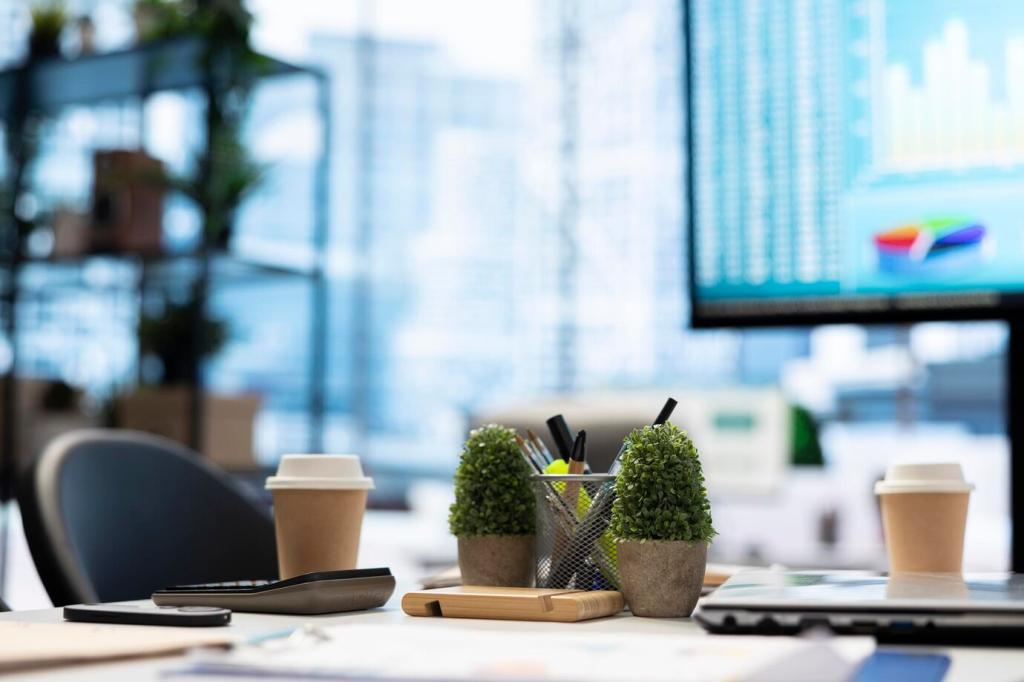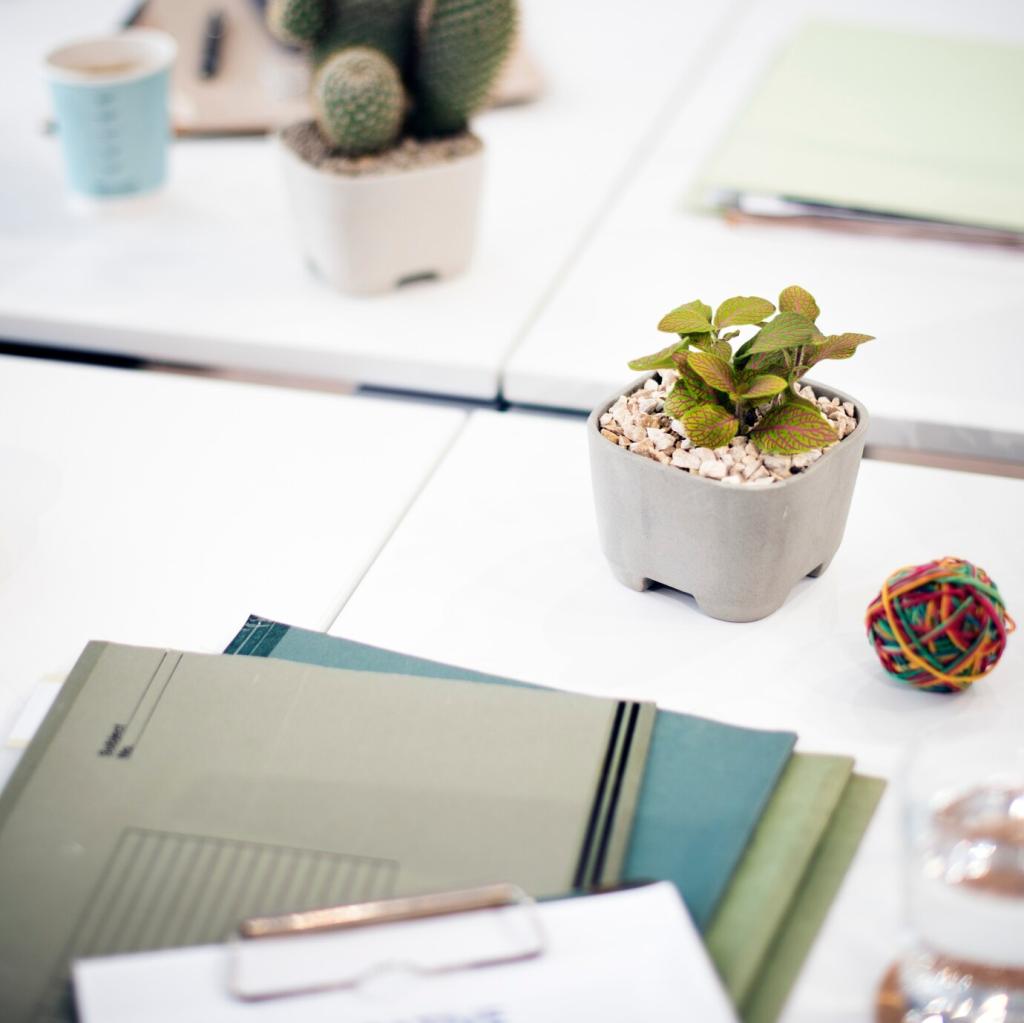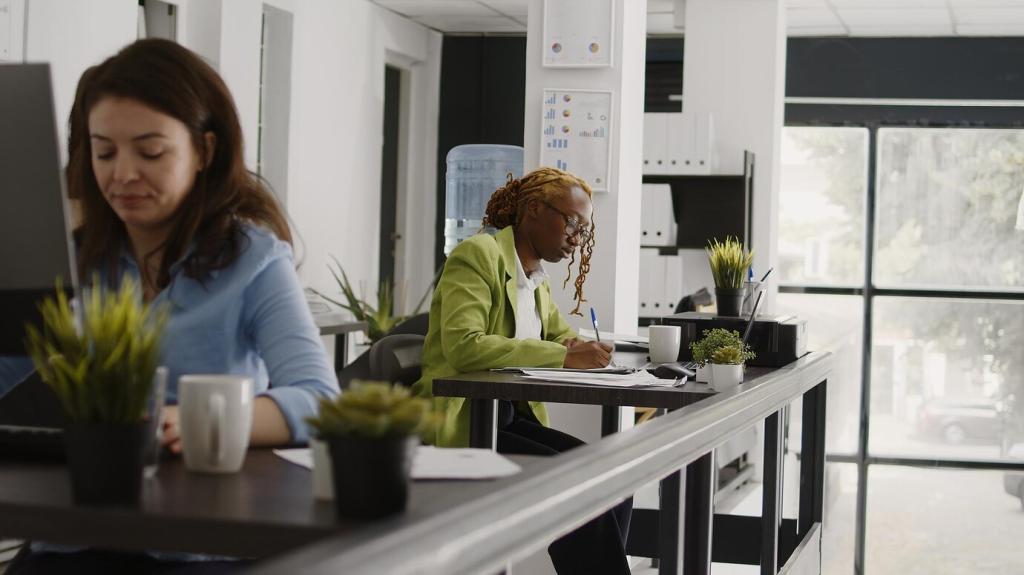
Sustainable Home Office Design Ideas to Work Better and Lighter
Chosen theme: Sustainable Home Office Design Ideas. Build a workspace that feels calm, looks beautiful, and treads gently on the planet—without sacrificing comfort or productivity. Stay with us for practical tips, heartfelt stories, and smart, simple steps you can start today.
Design Principles for a Low-Impact Workspace
A compact desk and targeted storage often deliver more clarity than sprawling surfaces. Smaller zones require fewer materials, use less energy to light and heat, and nudge tidy habits. After downsizing my desk, I gained floor space, better posture, and cleaner lines. What are your desk dimensions and daily must‑haves?
Choose FSC-certified wood, bamboo with verified sourcing, recycled aluminum, and powder-coated steel over solvent-heavy finishes. Look for modular pieces with mechanical fasteners, not permanent glues, to simplify repairs. Tell us which ethical brands you trust, and subscribe to get our vetted checklist for responsible furniture and finish selections.
Pick adjustable legs, swap-friendly tabletops, and shelves that reconfigure as projects grow. A flexible design prevents the replacement cycle that fills closets and landfills. My favorite hack: a salvaged tabletop atop height-adjustable frames. Have you rebuilt or repurposed a piece? Share photos and inspire someone’s next smart upgrade.

Energy Efficiency That Feels Effortless
Light smarter with daylight and focused LEDs
Position your desk to harvest indirect daylight from the side, then layer a focused, warm LED task light for late sessions. Task lighting reduces the need to flood an entire room. It’s kinder on your eyes and your bill. What’s your favorite lamp, and where does it live on your desk?


Power down the silent drains
Vampire loads quietly sip energy all day. Use smart power strips, set your computer to sleep after short idle times, and unplug chargers when not in use. One reader cut standby use by half with a single strip. Try it this week and tell us your before-and-after readings.

Choose certified, traceable materials
Look for FSC or PEFC labels for wood, Greenguard or equivalent for low-emission finishes, and clear supplier transparency. Honest materials age gracefully and are easier to maintain. If a maker publishes repair guides and part numbers, that’s a great sign. Drop your go-to brands so others can discover them too.

Ergonomics that lasts
An adjustable chair and sit-stand desk extend usefulness across tasks and seasons. Longevity is sustainability: when gear adapts, you keep it. I revived a secondhand chair with a new cylinder and arm pads instead of replacing it. Which ergonomic adjustments changed your workday most? Share your tips below.

Give old pieces a second story
Solid wood desks refinish beautifully, and metal frames can be powder-coated for a near-new look. One weekend, I turned a scuffed bookcase into a warm focal point with natural oil and new hardware. Tell us your best before-and-after rescue—and teach someone else how to try it.
Air Quality, Biophilia, and Wellbeing
Choose low- or zero-VOC paints, water-based adhesives, and sealants that keep indoor air friendlier. Air out new furniture in a ventilated area before moving it into your office. A small change in finish often means a big change in how a room smells and feels. What low-VOC products do you trust?
Tech With a Smaller Footprint
Favor upgradable laptops and monitors with ENERGY STAR or EPEAT ratings, and check for user-replaceable batteries or storage. A simple SSD swap kept my five-year-old laptop swift and relevant. What upgrade made the biggest difference for you? Share it so someone else can save a device from retirement.

Acoustics and Focus the Sustainable Way
Layer wool rugs, cork pinboards, and filled bookcases to calm echoes and boost warmth. Books absorb more than knowledge—they temper flutter echoes with character. My small office transformed after adding a cork wall stripe near the desk. What simple, natural material made the biggest difference in your space?
Acoustics and Focus the Sustainable Way
Organic cotton curtains, sliding reclaimed-wood panels, or a vintage screen carve focus without renovations. These move with you and adapt to different tasks. I rotate a lightweight curtain to mark deep-work time. Have you tried a movable divider? Share your setup and tips for balancing privacy and light.
Acoustics and Focus the Sustainable Way
A quiet room plus a gentle, low-volume soundscape can help nudge concentration and mask household noise. Think rain recordings through a modest speaker, not power-hungry gadgets. Experiment for a week, track your focus blocks, and tell us which sounds paired best with your tasks.
Habits, Routines, and Community
Pause every hour to stretch near a window, refill your bottle, and let your eyes rest on something living—like a plant or the sky. Short, mindful breaks reduce energy use by preventing comfort overcorrections. What’s your favorite micro-break ritual? Share it to inspire someone else’s afternoon reset.
